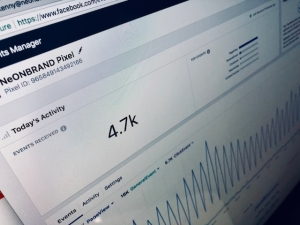Unlocking Social Media Success: A Comprehensive Guide to Campaign Planning
Social media marketing is an increasingly critical tool for businesses to engage with their audience, promote their products or services, and achieve various business objectives. Effective planning and strategy are the backbone of successful social media marketing. This blog post will guide you through the steps needed to plan a results-driven social media campaign.
A successful social media campaign doesn’t happen by accident. It requires careful thought, strategic planning, consistent execution, and regular adjustments based on the results. If you’re ready to take your social media marketing to the next level, let’s dive into the first crucial step – setting goals for your campaign.
Setting Goals for Your Social Media Campaign
 Every effective campaign starts with a clear set of goals. Your goals could range from increasing brand awareness to generating leads or driving website traffic. It’s crucial to establish these objectives early, as they will guide your content creation and help you measure your campaign’s success.
Every effective campaign starts with a clear set of goals. Your goals could range from increasing brand awareness to generating leads or driving website traffic. It’s crucial to establish these objectives early, as they will guide your content creation and help you measure your campaign’s success.
Remember to make your goals SMART (Specific, Measurable, Achievable, Relevant, Time-bound). This approach will help you design a clear and focused strategy. For example, instead of a generic goal like “increase website traffic,” you might aim to “increase website traffic from social media by 20% over the next quarter.”
Choosing Your Social Media Channels
Now that you’ve defined your goals, you need to decide where you’ll execute your campaign. Different social media platforms attract different audiences and serve different purposes, so it’s essential to choose the right channels for your specific goals and target audience. For example, if your campaign aims to reach young adults, platforms like Instagram or TikTok might be most effective. Remember, that a diversified social media presence is crucial for reaching your prospective clients successfully.
Deciding how often to post is also part of this step. The frequency will depend on your resources, your audience’s preferences, and the specific platform. It’s important to maintain a balance – you want to stay in your audience’s mind without overwhelming them. As a starting point, research common posting frequencies for your chosen platforms and adjust as needed based on your analytics (which we’ll discuss later).
Planning Your Social Media Strategy
With your goals set and your platforms chosen, it’s time to outline your strategy. This includes identifying any special events or opportunities (like holidays or industry events) and determining the topics you’ll cover in your posts. Remember that your content should align with your brand and your goals, and should provide value to your audience.
A well-defined strategy can streamline your content creation process and ensure that your campaign remains cohesive and focused. Regular brainstorming sessions can help keep your content fresh and engaging. And as with every step of this process, remember to stay flexible – if something isn’t working or if a new opportunity arises, be ready to adjust your strategy.
Content Creation is Where Your Strategy Comes to Life.
 Start by creating a content calendar that outlines what you’ll post and when. This tool helps ensure a balanced content mix, maintain consistent posting, and tie your content to specific goals or events.
Start by creating a content calendar that outlines what you’ll post and when. This tool helps ensure a balanced content mix, maintain consistent posting, and tie your content to specific goals or events.
Once you have your calendar, start writing your posts. You may find it helpful to write multiple posts at once and save them in a document for future use. This “batching” approach can help streamline your workflow and ensure you always have content ready to go.
Remember that your posts should reflect your brand’s voice and resonate with your audience. Always aim for quality over quantity – it’s better to have fewer, high-quality posts than a large number of low-quality ones.
Graphic and Image Creation for Social Media Posts
Visuals are a critical component of social media marketing. They grab your audience’s attention, convey information quickly, and can significantly increase engagement. Depending on your brand and your content, you might use photos, graphics, infographics, videos, or a mix.
One popular tool for creating social media images is Canva, which offers a wide range of templates and design elements. Click here to have a read of my blog on how to use Canva for your social media marketing. Regardless of the tool you use, aim for a consistent aesthetic that aligns with your brand. Also, remember to optimise your images for each platform – what works on Instagram might not work on LinkedIn.
Content Scheduling Methods
Scheduling your content is a great way to save time and ensure consistency. There are various tools available that can help you schedule posts across different platforms. However, be aware that how you schedule can impact your reach, depending on the platform’s algorithm.
For example, some platforms might prioritise posts published through their own tools over those published through third-party schedulers. It’s worth researching the best practices for each platform you use.
Daily Monitoring and Engagement
Consistently monitoring your social media channels is crucial for maintaining engagement and building relationships with your audience. This includes responding to comments, direct messages, and mentions. Quick, thoughtful responses can help show your audience that you value their input and are engaged with them.
Regular monitoring also allows you to manage your online reputation, handle any issues promptly, and stay on top of industry trends or discussions. Consider setting up alerts or dedicating specific times each day for social media monitoring to make this task manageable.
Importance of Scheduling Regular Analytics Reviews
 Scheduling regular times for a monthly analytics review is an essential part of an effective social media campaign. These sessions allow you to assess your campaign’s performance and make necessary adjustments. You might track metrics like engagement rates, follower growth, or conversions, depending on your goals.
Scheduling regular times for a monthly analytics review is an essential part of an effective social media campaign. These sessions allow you to assess your campaign’s performance and make necessary adjustments. You might track metrics like engagement rates, follower growth, or conversions, depending on your goals.
Use the analytics data you’ve been collecting to assess what’s working and what’s not. Are you meeting your goals? Which types of content are most successful? What can you learn about your audience’s preferences?
If you’re unsure how to review analytics, have a read of my blog on how to make the best use of social media analytics for your marketing strategy for my top tips.
Remember, social media marketing is a dynamic process. What worked one month might not work the next. Stay flexible and willing to adapt your strategy. This will help keep your content fresh and engaging and ensure you’re continually moving toward your goals.
Don’t let the complexity of social media marketing intimidate you. By dividing the process into practical, manageable steps, you can navigate it with confidence. Why not start today: Set precise goals, select your platforms thoughtfully, formulate a robust strategy, craft compelling content, and commit to regular monitoring and adjustments.
If you’re not ready to embrace the journey of planning your successful social media campaign right now, why not get in touch with me to discover how I can plan and implement your social media marketing campaign for you? Just click here to get started.




Leave a Reply
Want to join the discussion?Feel free to contribute!